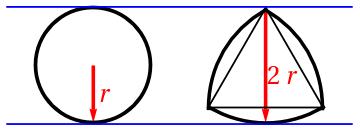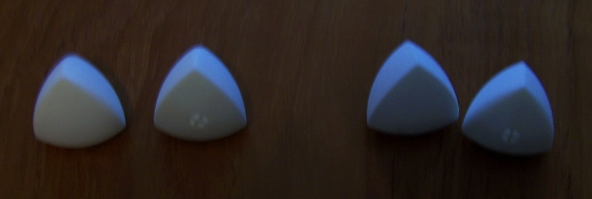Your Deal is Better than my Deal
Do you know how to cut a cake? I mean, mathematically. There is a whole area of mathematics that studies cake cutting.
Mathematicians usually assume that each person has their own idea of what is the best part of the cake. Suppose three sisters are celebrating the New Year by having a cake. Anna likes only icing, Bella likes only chocolate chips, and Carol likes only pieces of walnuts mixed into the cake. Mathematicians want to cut cakes fairly. But what is fair? Fair is fair, right? Wrong. There are several different notions of fair cake division.
There is a proportionate division. In such a division every sister gets at least one-third of her value of the cake. This seems fair. Let’s see an example. Anna gets one third of the icing, Bella gets one third of the chocolate chips, and Carol gets everything else. This is a fair proportionate division. Each of the sisters believes that she got at least one-third of the cake, in their own value. But it doesn’t seem quite fair.
There is a stronger notion of fairness. It is called envy-free. In this division each sister gets at least one-third of the cake and, in addition, none of the three sisters would improve their value by swapping pieces. That means, if Anna wants only icing, not only does she get at least one-third of the icing, but also no one else gets more icing than Anna. The previous example of the proportionate division is not envy-free. Carol got two-thirds of the icing, so Anna would want to switch with her.
Let’s try a different division. Anna gets one third of the icing, Bella gets the chocolate chips and another third of the icing, and Carol gets all the walnuts and another third of the icing. Formally, this is envy-free cake cutting. But poor Anna. What do you think Anna feels when she sees the smiles of contentment on the faces of her sisters? Whoever invented the name doesn’t understand envy. Anna got one-third of the cake by her value, but the other sisters got the whole cake!
Luckily mathematicians understand this conundrum. So they invented another name for a cake division. They call a division equitable if everyone values all the pieces the same. So the division above is envy-free but not equitable. Let’s try again. Let’s give each sister one-third of all the components of the cake. This division is very good mathematically: it is proportionate, envy free, and equitable. By the way, envy-free division is always proportionate. This division seems fair. But is it a good division?
There is another term here: Pareto-efficient division means that it is impossible to make one person feel better, without making another person feel worse. All divisions above are not Pareto-efficient. Moving some icing from Carol to Anna, doesn’t decrease the value for Carol, but increases the value for Anna.
There is an even better way to divide the cake. We can give the icing to Anna, the walnuts to Bella, and the chocolate chips to Carol. This division is envy-free, equitable, and Pareto-efficient. It is perfect. Mathematicians even have a word for it. They call it a perfect division.
Mathematically this division is perfect. Unfortunately, sisters are not. I know an Anna who would still envy Bella.
Share:
